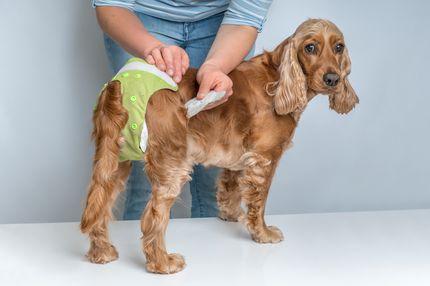Facts & Origin
Origin and history of the Schipese
A rarer mix of the Maltese and Schipperke, the Schipese combines the best characteristics of these two breeds. The Schipperke originated in Belgium and was a popular guard dog in Flemish bakeries, while the Maltese is one of the oldest sociable toy breeds, originating from the Mediterranean island of Malta.
Husbandry tips for the Schipese
- The Schipese is low maintenance thanks to its short coat, but needs regular grooming to stay healthy.
- Prone to obesity, so a healthy, balanced diet is essential.
- He is known for his loyalty and affection, but also needs plenty of exercise and mental stimulation.
- Early socialization and training are important to ensure that the Schipese gets along well with other dogs and people.
All in all, the Schipese is a friendly, loving and alert hybrid breed that makes a good family dog. With proper care and love, this loyal companion is sure to provide many years of enjoyment.
| Alternate Name | - |
| Origin | Malta - Belgium |
| Life expectancy | 12 - 18 years |
| Care requirements | high-maintenance |
| Activity level | low - average |
| FCI group | not recognised |
| AKC group | not recognised |
| KC group | not recognised |
More Maltese mixes
More Schipperke mixes
Attitude, character and temperament of the breed
Suitability and personality of the Schipese
The Schipese, who is very adaptable, adapts to both apartment life and country living. His moderate energy and curiosity make him a great companion for walks or outdoor play. However, he is not strictly an outdoor dog and enjoys the comfort of the home.
From the Maltese, the Schipese inherits his sociable nature. He is affectionate and very devoted, loves to cuddle and is always eager to please his family. From the Schipperke, he inherits his guarding instinct, which makes him an excellent watchdog for your home.
Characteristics of the Schipese
- Loyal: Schipese are extremely loyal dogs that develop a strong bond with their owners.
- Playful: With their playful nature, they always keep their owners on their toes and create a lively atmosphere.
- Intelligent: Their high intelligence and quick learning ability makes them excellent companions.
- Alert: They are alert and courageous, traits that are ingrained in them through their Schipperke ancestry.
Character
Usage
Health and Care
The health of the Schipese is generally good, however, potential owners should be aware that, as with any mixed breed, certain hereditary health problems may be present. It is recommended that the dog's health be checked regularly by a veterinarian to ensure that it remains fit and healthy.
Grooming requires a certain amount of dedication. Because of their double coat, they should be brushed regularly to prevent matting and shedding. Proper dental care is also important to prevent dental problems.
Breeding the Schipese
The mix of Maltese and Schipperke was created with the goal of breeding a dog that combines the best qualities of both parent breeds. It is important to choose responsible and reputable breeders who perform health tests on the parents to ensure healthy puppies.
What does this mongrel look like?
The Schipese is an interesting cross between Maltese and Schipperke. A fine mix, particularly suitable as a loving family dog, of robust Schipperke and gentle, cuddly Maltese.
As with all mixed breed dogs, the appearance and coat structure of the Schipese varies according to heredity . The color palette ranges from pure white of the Maltese to black or brown of the Schipperke. The coat itself can be short or medium length and either curly like the Maltese or more smooth and rough like the Schipperke.
| Fur length | long - medium |
| Fur | flat coated |
| Ear shape | Triangle - Standing Ears |
| Tail | fanned out - rolled up |
| Anatomy | dainty, rugged, strong |
| Size ♀ | 20 - 30 cm |
| Weight ♀ | 3 - 8 kg |
| Size ♂ | 21 - 33 cm |
| Weight ♂ | 3 - 8 kg |
| Suitable For | Beginner, Seniors, Children |
Known Diseases
Patellar problems
Problems with the Patellar can be a displacement or weak kneecap, which is one of the most common causes of lameness in dogs, also because of overweight.
Eye diseases
Often occur with allergies and intolerances.
Skin inflammations
Can be hereditary in certain breeds.
Heart disease
Can occur frequently in dogs and can sometimes be treated with medication.
Cataract
Cataracts are still one of the most common causes of blindness, even in dogs.
Diabetes
The metabolic disease diabetes often occurs in overweight dogs.
Overweight
Often, unfortunately, the dogs very much under excess weight. But the dogs themselves are never to blame!
Metabolic diseases (cystinuria)
Cystinuria is a hereditary metabolic disease. Affected dogs lack a transport protein for certain amino acids (protein building blocks). In the kidney, the task of this transport protein is a return transport of amino acids from the urine into the bloodstream.
FAQ
-
These mixed breeds are intelligent, loyal, active and playful. However, they can also be affectionate and tender.
-
Maltese-Schipperke hybrids have a good overall health level. Typical health problems associated with this hybrid breed include eye problems, heart disease, allergies, and respiratory problems.
-
A healthy Maltese-Schipperke mix has a life expectancy of 10 to 14 years.






















